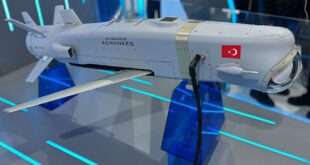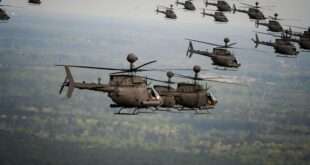The U.S. Navy’s USS Desert Ship (LLS-1) crew fired on the 17th of June a Raytheon Company Standard Missile-6 at a medium-range supersonic target, successfully engaging the simulated ‘over-the-horizon’ threat. This mission was the next in a test series for Naval Integrated Fire Control – Counter Air (NIFC-CA), a program designed to link U.S. Navy ships and airborne sensors into a single network.
"This flight test is yet another demonstration of SM-6 providing the U.S. Navy with critical defensive capabilities against emerging threats," said Capt. Michael Ladner, Program Executive Office, Integrated Weapon Systems (PEO IWS) 3.0 Surface Ship Weapons major program manager.
During over-the-horizon test scenarios, the shooting ship uses information from off-board sensors – other ships or airborne sensors – to support launching the missile and engaging the target.
"This weapon multiplies the amount of defended space the U.S. Navy can protect," said Mike Campisi, Raytheon’s Standard Missile-6 senior program director. "The ships can now use data from remote sensors to support the engagement of targets. Sailors can now launch at threats much sooner than ever before."
Deployed today, the SM-6 provides U.S. Navy vessels extended range protection against fixed- and rotary-wing aircraft, unmanned aerial vehicles and cruise missiles as part of the NIFC-CA mission area.
In May 2015, Raytheon delivered the first full-rate production SM-6 from its $75-million, 70,000-square-foot SM-6 and Standard Missile-3 all-up-round production facility at Redstone Arsenal in Huntsville, Ala. SM-6 full-rate production is funded through a PEO IWS Surface Ship Weapons firm fixed-price contract.
 Defense Arabia Defense Arabia is your source for the latest news on defense, national security and analysis in the Middle East.
Defense Arabia Defense Arabia is your source for the latest news on defense, national security and analysis in the Middle East.



